The data surrounding Australian housing construction continues to deteriorate, making a mockery of the Albanese government’s target to build 1.2 million homes in five years.

The latest data from the Australian Bureau of Statistics (ABS) revealed that only 12,400 homes were approved for construction in March, which was the lowest monthly number since April 2012:
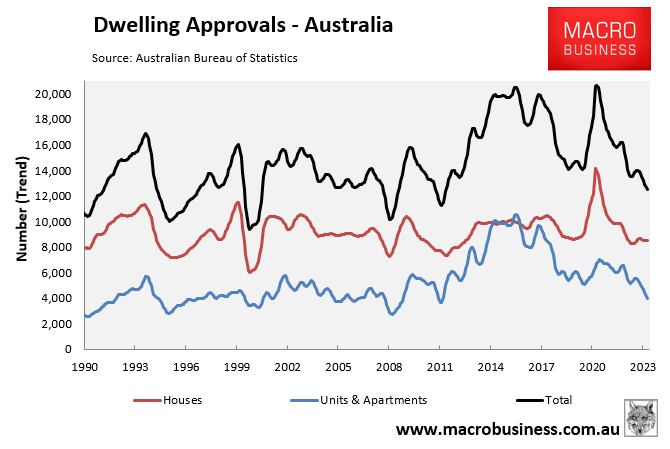
On an annualised basis, only 150,120 homes were approved for construction in March in trend terms. That is roughly 90,000 below the Albanese government’s annual housing target of 240,000 homes a year.
New homes sales have also collapsed to cyclical lows, as illustrated in the following chart by Justin Fabo at Antipodean Macro:

The Urban Development Institute of Australia’s (UDIA) new housing supply benchmarking index is also running at cyclical lows amid the collapse in construction rates:
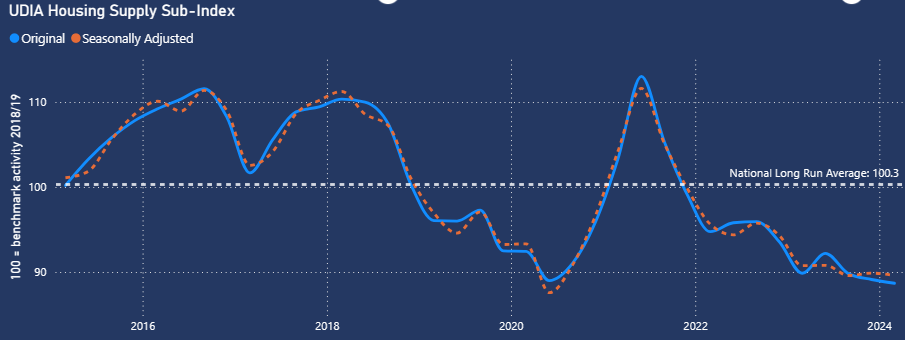
Meanwhile, 2439 home builders were thrown into external administration in the first 10 Months of this financial year, a 150% increase on 2022 levels:
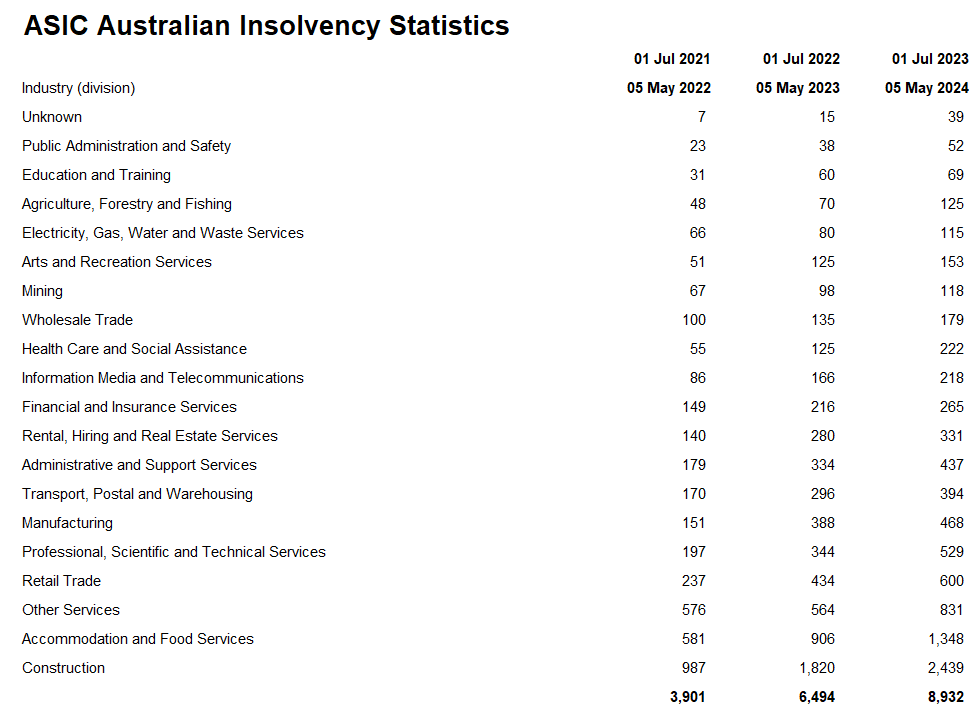
On Wednesday, the ABS released data on the volume of residential construction work done, which sank to its lowest level since the height of the pandemic.
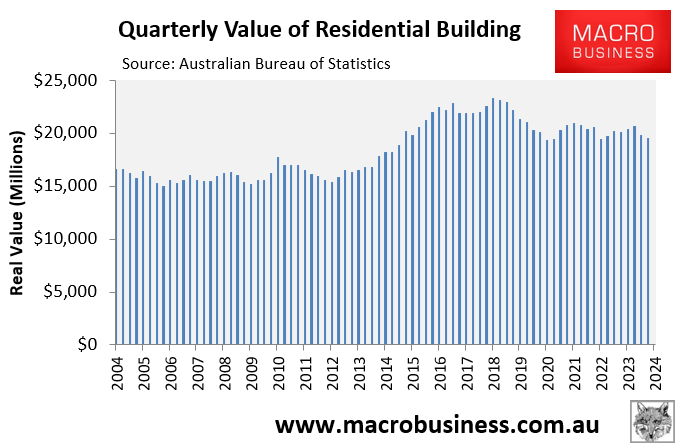
There was $19.6 billion worth of residential construction work done in the March quarter of 2024, the lowest result since June 2022 ($19.46 billion) and September 2020 ($19.49 billion).
The value of construction work done in the March quarter was also way below the peak of $23.3 billion in the June quarter of 2018.
The following chart from Justin Fabo at Antipodean Macro plots the real value of residential construction by sub-component:
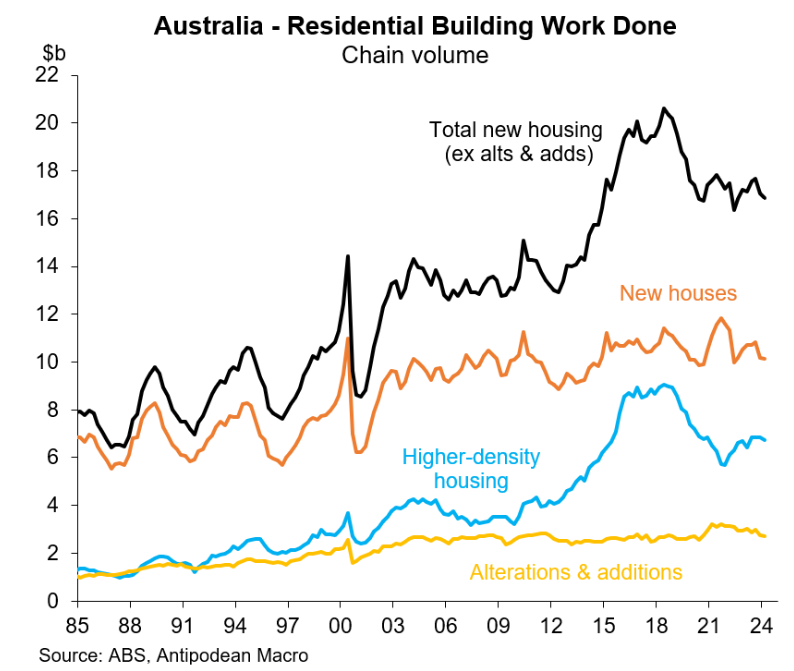
As illustrated in the first chart above, Australia’s all-time record for dwelling completions was 223,600 in the year to March 2017.
We are currently nowhere near that level, let alone Labor’s 240,000 target, with every leading indicator pointing the wrong way.
Meanwhile, Australia’s population continues to grow like an out-of-control lab experiment, courtesy of unprecedented net overseas migration.
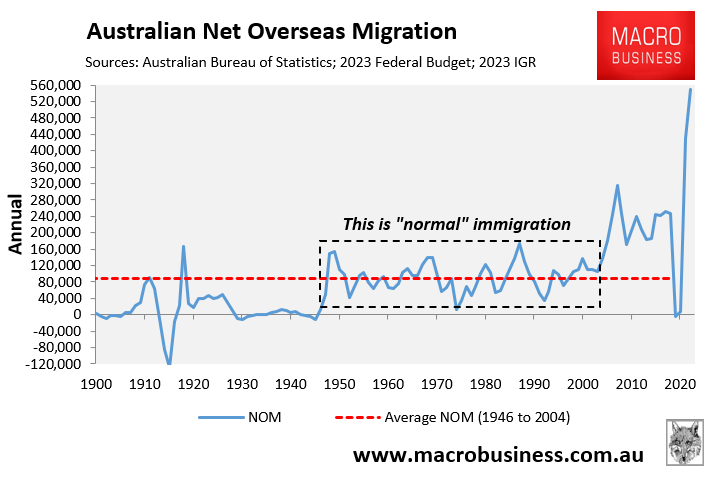
As a result, rental vacancy rates have collapsed and advertised rents have soared, pushing thousands of tenants into deep financial stress, group housing, or homelessness.
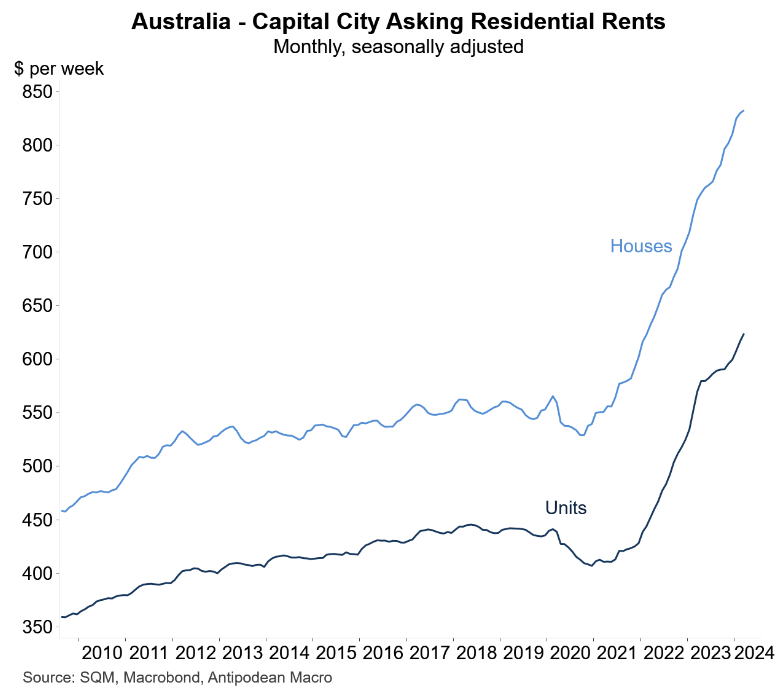
The only realistic solution to Australia’s housing shortage is to reduce demand by cutting net overseas migration hard.
Australia’s population must grow at a rate that is slower than the nation’s capacity to build homes and infrastructure.
Otherwise, the housing crisis will become a permanent feature of Australia.

